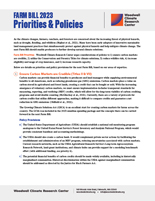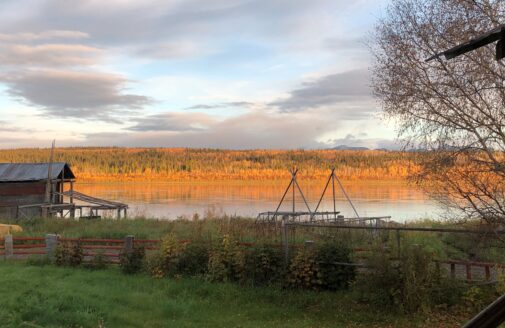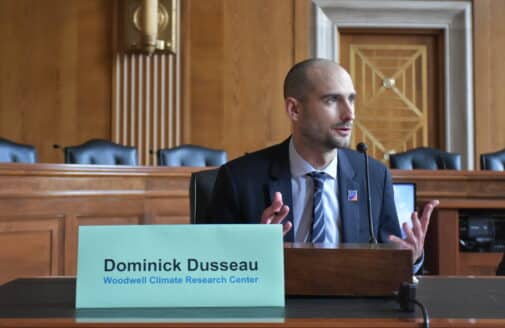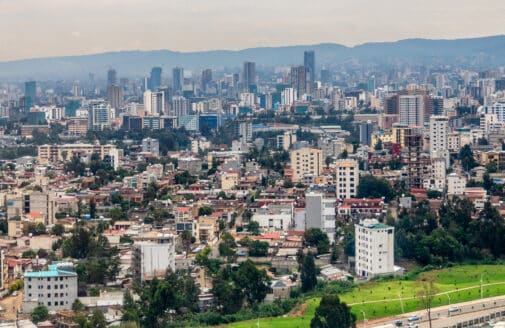Farm Bill 2023 priorities & policies
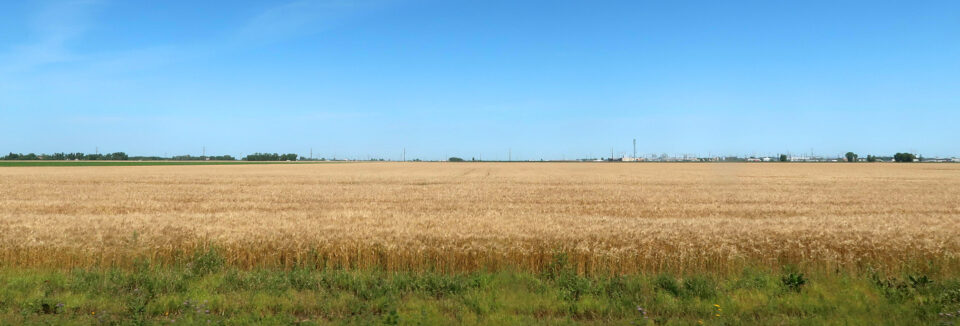
Published June 3, 2022. Updated September 2022 and February 2023.
The full document can be found here.
As the climate changes, farmers, ranchers, and foresters are concerned about the increasing threat of physical hazards, such as drought, flooding, and wildfires (Majkut et al., 2021). Many have been early adopters of innovative sustainable land management practices that simultaneously protect against physical hazards and help mitigate climate change. The next Farm Bill should enable producers to further develop natural climate solutions.
Below are details on priorities and policy provisions for the next Farm Bill, based on our areas of expertise.
- Ensure Carbon Markets are Credible
Carbon markets can provide financial benefits to producers and land managers while supplying environmental benefits to all Americans, such as reducing greenhouse gas (GHG) emissions. Carbon markets place a value on carbon stored in agricultural and forest lands, creating a credit that can be bought or sold. With the increasing emergence of voluntary carbon markets, we must ensure implementation includes transparent standards for measuring, reporting, and verifying (MRV) credits, which will allow for the long-term viability of carbon crediting programs and avoid double counting (McGlinchey et al., 2021). Currently, there are a variety of protocols for carbon credits that utilize different approaches, making it difficult to compare credits and guarantee a net reduction in GHG emissions (Oldfield et al., 2021).The Growing Climate Solutions Act (GSCA) is an excellent start for creating carbon markets for farms across the country. The GCSA was included in the 2023 omnibus spending package and the concepts there can be carried forward in the next Farm Bill.
- Utilize the Conservation and Forestry Titles for Climate Solutions
The Conservation and Forestry titles of the Farm Bill should encourage natural climate solutions. Many conservation programs, including the Conservation Reserve Program (CRP), Conservation Stewardship Program (CSP), and Environmental Quality Incentives Program (EQIP), already incentivize climate-smart practices. Most programs, however, are oversubscribed. Funding and enrollment should be increased to meet both producer demand and climate stewardship needs.Climate-smart goals, such as reducing GHG emissions and improving soil health, should also be eligible activities under conservation programs. These practices also have significant co-benefits, such as improving soil water retention and increasing resilience. Similarly, the Healthy Forests Reserve Program (HFRP) and other incentive-based voluntary programs in the Forestry Title should increase funding and enrollment and include climate-smart practices as eligible activities.
Land naturalization is also key to achieving needed natural climate solutions. This could be accelerated by increasing enrollment for land retirement and easement programs, such as the CRP, HFRP, and Wetlands Reserve Easements.
- Reduce Wildfire Risk
Fuel reduction by thinning can reduce the risk of wildfire ignition. To conduct thinning for risk-mitigation, we recommend that diameter and basal area limits be established regionally, and no thinning should occur in old-growth and mature forests. These recommendations focus on maximizing the carbon potential in U.S. forests while reducing wildfire risk and avoiding GHG emissions from fires. Even with additional forest thinning, wildfire frequency and severity are increasing across the United States, especially in the West and in Alaska. As a result, additional fire management and suppression funding are needed to address the risk. - Increase Eligibility and Usage of Crop Insurance
While the majority of U.S. cropland is insured, only about 19% of farms hold crop insurance (Rosch, 2021). As physical hazards increase, we must reduce barriers for small-scale farmers to purchase crop insurance. Crop insurance should also incentivize conservation practices (such as cover cropping) instead of disincentivizing them. Specifically, all Natural Resource Conservation Service-endorsed practices should be established as Risk Management Agency (RMA)’s “Good Farming Practices” under the Federal Crop Insurance Corporation. These practices will increase the resilience of the farms and likely reduce crop yield losses. - Increase Research Capacity
Best land management practices, especially when incorporating natural climate solutions, are complex and differ widely based on the ecosystem, climate, and type of agricultural production. While certain practices, such as no-till, work well and provide climate and conservation benefits for some farms that might not be the case for farms in other regions. Funding should increase for USDA’s climate hubs and land-grant universities, which can study regional variability for land management practices (Oldfield et al., 2022). This investment will discourage one-size-fits-all solutions, which will not work for natural climate solutions.Greater research capacity would also support the need for better monitoring and standardization as well as building a natural lands and environmental data infrastructure, which are needed for carbon markets.
The full readout of the safeguards and principles can be found here.




